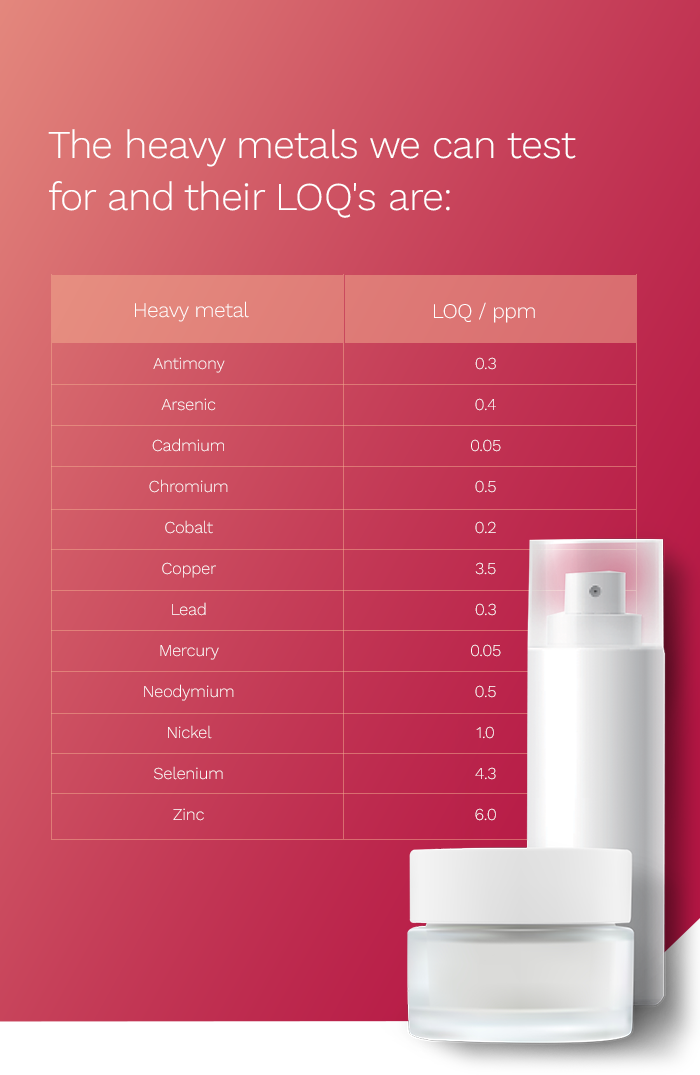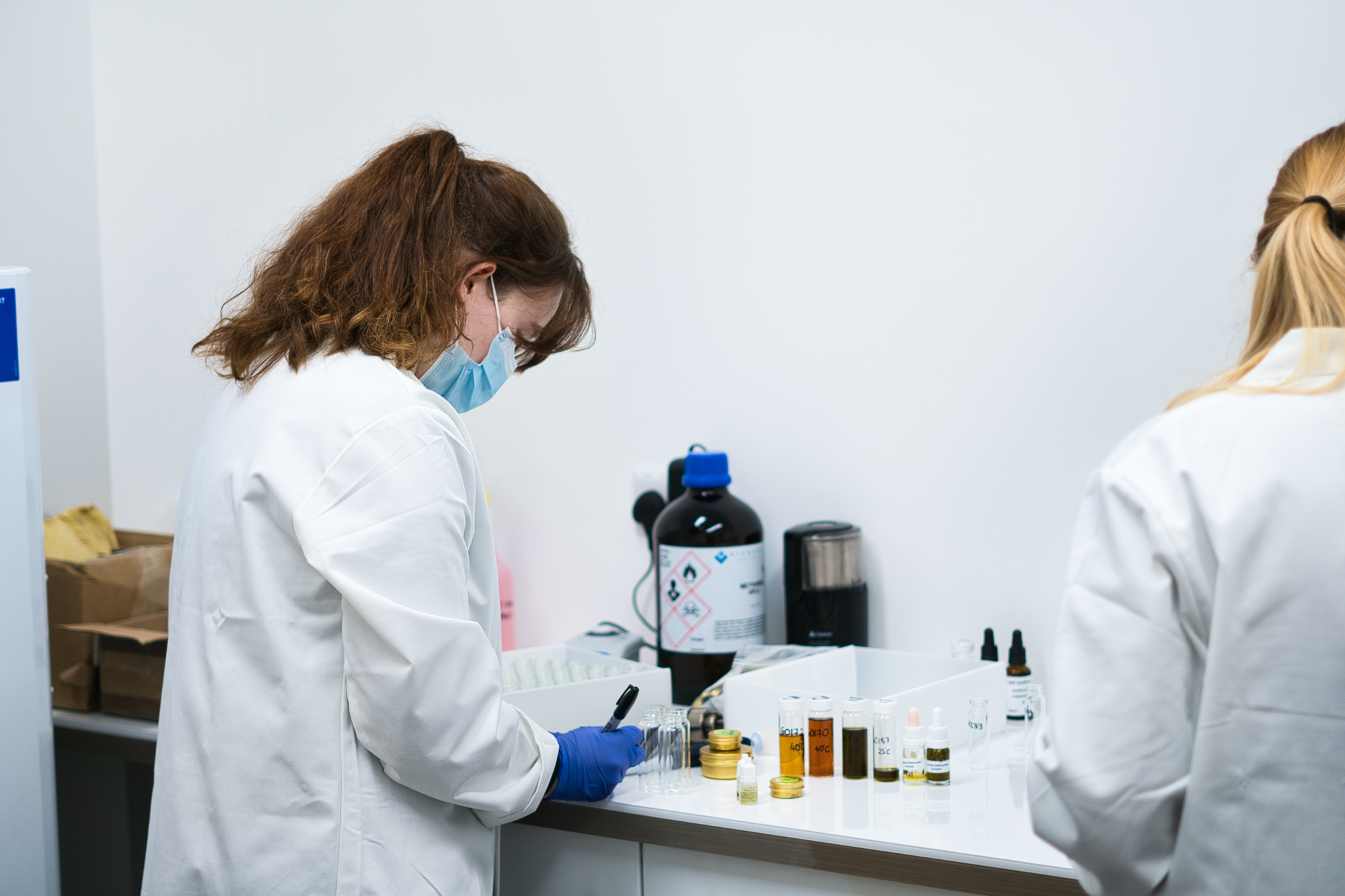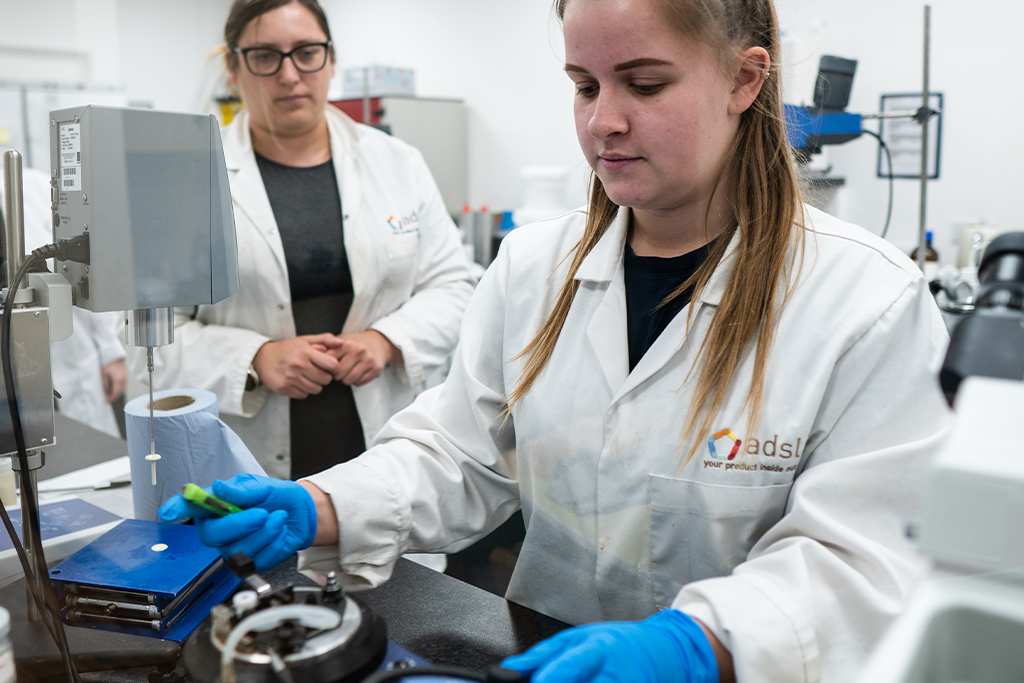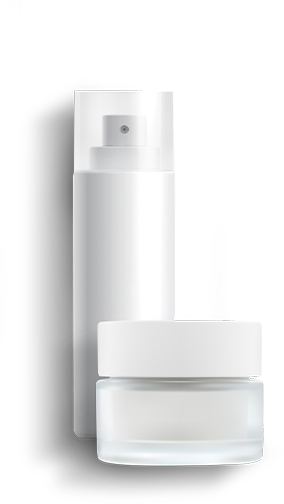When it comes to cosmetics, it’s vital we make sure products are safe and healthy for human use. We need to know that the ingredients that have been used won’t irritate us or cause longer term issues.
To ensure their safety, the cosmetics industry follows strict regulations based on scientifically determined safety levels. As a result of this rigorous monitoring, consumers can be confident that the products they see on the shelves have been tested and deemed safe and suitable for use.
Heavy metals and cosmetics
One of the strictest regulations in the industry is the testing of heavy metals in cosmetic products. By heavy metals we mean elements such as lead, arsenic, mercury, antimony, and chromium. In fact, the use of these heavy metals in cosmetic products is explicitly banned in the UK and EU under Annex II of the UK and EU Cosmetics Regulations.
Heavy metal elements occur naturally in the environment around us. They’re often present in the context of mining, agriculture, vehicle emissions, treated woods, paints, etc., which means it’s perfectly possible, and often times unavoidable, for them to be carried into cosmetic products from the environment or introduced unintentionally during the manufacturing or storage process.
As analytical techniques have improved, it’s become possible for even the smallest traces of some of these substances to be detected. And so, to acknowledge the nature of trace heavy metals in cosmetic formulations, article 17 was added to the UK and EU Cosmetics Regulations. This article states that unavoidable traces of prohibited substances may be present in cosmetic products, subject to two important safeguards
- The substance in question could not reasonably be removed during or after manufacture, and
- That the product is safe for human health.
Are trace amounts of heavy metals bad?
Even small amounts of heavy metal exposure can be toxic to humans, but the level of risk depends very much on how much you’re exposed to, for how long and how frequently.
It’s the fact that cosmetics are applied directly to the skin, and even around sensitive areas like the eyes, that make the presence of trace heavy metals riskier. With the potential to enter the body through absorption and even ingestion when products are used directly on the lips.
Over time, it’s possible for some consumers to develop a sensitivity towards these heavy metals. They might notice allergic reactions, contact dermatitis and other skin problems. And of course, a build-up of exposure over time could potentially lead to long-term health issues, only reiterating the importance of regulation and compliance.

How are heavy metals regulated?
Due to the risks posed, there is strict legislation in place to control the presence of heavy metals, particularly within make-up and personal care products. These can, however, differ across regions. This is vital to take notice of as a cosmetic brand or manufacturer. You’ll need to investigate and understand the rules and regulations as they pertain to each of the territories in which you plan to sell your product.Unfortunately, the UK and the EU Cosmetics Regulations do not specify what constitutes an ’unavoidable trace’. They state instead that each impurity must be assessed on an individual basis to ensure its presence does not pose any risk to human health. This of course requires accurate analyses of both raw materials and finished products, as well as the production of any necessary paperwork to prove safety.
How can ADSL help?
At ADSL we deliver industry leading heavy metals analysis as well as offering guidance on what’s required depending on your situation and location.
We have extensive experience working with customers at every stage of their product development process, from formulation and compliance to safety testing and manufacturing. We count on a wealth of expertise to offer support and guidance in how you can best manage and reduce heavy metal presence within the breadth of the cosmetic products you produce.
To ensure we can offer the highest degree of accuracy, we have developed our own rapid and effective ISO 17205 accredited microwave digestion method for testing heavy metal presence within product samples. We then use a Shimadzu ICPMS- 2030 instrument to analyse the heavy metal content. We pair this testing approach with expert advice and guidance to help you understand how best to manage and optimise products, where needed, to ensure they are fully compliant in all geographical regions.
Ultimately, we offer the confidence manufacturers and consumers need that the products they are putting onto the market, and onto their skin, are as safe as they possibly can be.
How does it work?
If you want to work with us, the process is easy.
All we need is a sample of your product along with the completed INCI and any relevant information about which markets you are in or are planning to be, how you expect your product to be used and the claims you want to make on your packaging. Once we have received this, our expert compliance team will be able to put your product to the test using our own ISO 17205 accredited heavy metals test. How long the test takes will depend on the product and what you need from us. This will be discussed and agreed before any testing is carried out.
Importantly, we don’t just share results. We understand our responsibilities as a leading compliance and formulation lab and so will also supply recommendations and suggest solutions to work out any issues that come up.
Could we help you with your product?
It doesn’t matter where you’re based in the world, if you need heavy metal testing, we can provide it for you in-house at our own purpose-built facilities. When you are ready to get started or if you would like to find out more, please get in touch:
Call us on +44 (0) 1803 520 048 | Mon-Fri 9-5pm (GMT)
Email us: [email protected]
Book a free consultation using the link at the top of this page.





